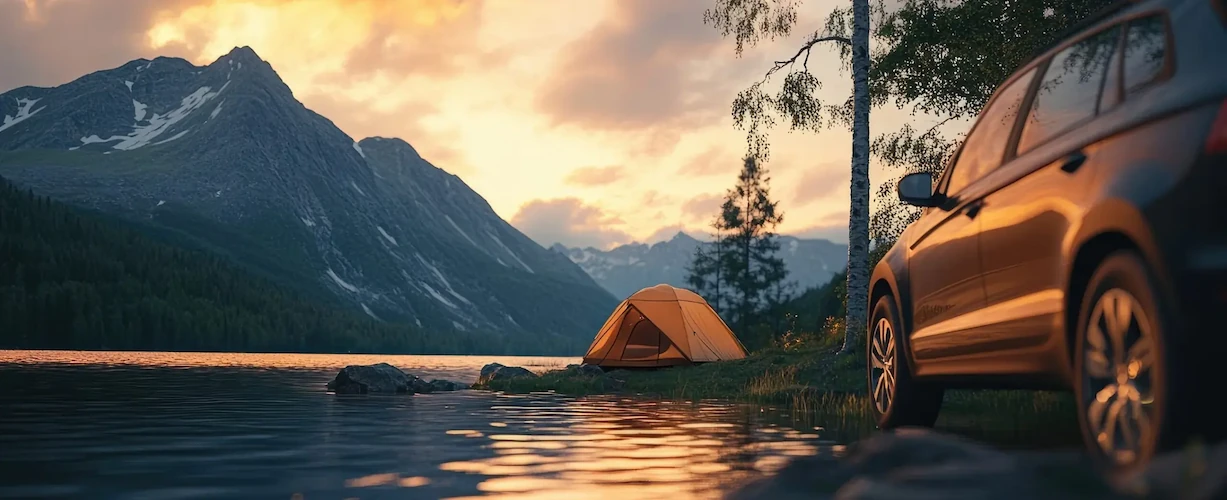 Do your palms clam up at the thought of black ice and whiteout conditions? Would you rather spend the day at the dentist than 20 minutes trapped in rush-hour traffic? Well, you're not alone! Bad driving conditions can drive even the most experienced rental car customer crazy. Whether it's constructions, adverse weather conditions or a mixture of both, bad driving conditions can cause anyone to second guess their instincts and make poor driving decisions.
Do your palms clam up at the thought of black ice and whiteout conditions? Would you rather spend the day at the dentist than 20 minutes trapped in rush-hour traffic? Well, you're not alone! Bad driving conditions can drive even the most experienced rental car customer crazy. Whether it's constructions, adverse weather conditions or a mixture of both, bad driving conditions can cause anyone to second guess their instincts and make poor driving decisions.
The next time you find yourself smack dab in the middle of a terrible driving scenario, don't panic. Stay calm, and take extreme care in order to ensure the safety of the occupants in your vehicle and the vehicles around you.
Understanding the Worst Driving Conditions
The following are five of the most frustrating and frightening driving conditions that you can encounter in your car rental.
1) Extreme Rain
Rain might not seem like a major issue when driving a rental car, but consider the following. Nearly 30% of ran-off-the-road accidents in the United States are caused by wet road conditions. What's more, nearly 85% of drivers feel that a pouring rainstorm is the most difficult weather condition to drive in. Extreme rain can reduce visibility and prevent drivers from seeing clearly. Top that off with an increased chance of hydroplaning, and it's easy to see why so many independent car rental customers are scared to buckle up when it's raining buckets.
For your safety as well as for the safety of others, remember to slow down when the rain starts to fall. Reduced speed will help you manage slick conditions and avoid unnecessary skids.
2) Blizzard Conditions
Snow is an unavoidable driving condition for many car rental customers. Heavy snow reduces visibility, impacts stopping distances and increases your chances of being involved in an accident. But even light snow can cause chaos on the roadways. Statics show that the first small snowfall after a dry spell can increase the likelihood of an accident immensely. Each additional 0.4" of precipitation on a given day can increase the fatal crash rate by 1%; it will also increase non-fatal crashes by roughly 11%.
Slowing down is the best way to stay safe when driving in snowy conditions. Be wary of sharp turns and remember to leave plenty of space between you and the vehicle ahead of you.
3) Ice Ice Baby
The presence of ice, especially black ice, can greatly increase your chances of being involved in a car accident. Not all car rentals respond the same to icy, slippery roads, so be careful. As such, remember to review the braking system information in the owner's manual of your rental before embarking on a road trip. It's also worth noting that some areas of roadway will become extra slippery when icy conditions hit. This is normally due to lack of direct sunlight. Therefore, it's important that you exhibit extra caution when driving on bridges, overpasses and in tunnels.
If you're going to be traveling in an area that's known for icy conditions, try and request a rental car that has four-wheel drive capabilities. It's also important that you take the time to clear any snow or ice buildup from your vehicle before attempting to drive. This includes a thorough scrape of the roof, trunk, turn signals, tail and headlights.
4) Heavy Traffic
Road rage and impatience are common side effects of heavy traffic conditions. Not surprisingly, they are also major contributors to rush hour car wrecks. Losing your cool in the middle of a traffic jam will only lead to problems. Instead, stay calm and be extra conscious of your actions. Use your turn signal and avoid any bizarre, quick lane changes. Using caution and good judgment when faced with terrible traffic conditions will greatly improve your chances of escaping the situation unscathed.
5) Hail
Hail can produce dangerous driving conditions as well as cause direct damage to your vehicle. As such, the best way to stay safe during these types of adverse conditions is to simply stay at home. If you get caught in the middle of a storm, seek cover. If you can't avoid the situation, turn on your headlights, slow down and treat every intersection as if it were a stop sign.
Don't let disturbing driving conditions ruin your rental car trip. Follow the above tips to ensure your safety while on the road.
